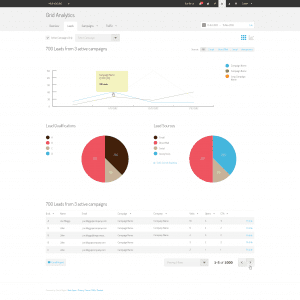Topics
Is It Time To Re-Think MDF?

The process of offering marketing development funds, or MDF, has been a tried and true tactic for vendors that rely on resellers and partners to extend brand awareness and sales on a global scale.
However, several industry sources have acknowledged that with the changing marketing landscape, there has been a decline in overall adoption of MDF programs. For example, research firm SiriusDecisions has often noted that MDF usage has dropped below 25%.
Research from PartnerPath confirms that MDF initiatives need to evolve to stay relevant. The company asked 20 vendors to identify the percentage of funds that typically go unused.
- 15% of vendors said more than 25% of funds go unused;
- 18% of vendors said 15% to 20% goes unused; and
- 40% of vendors said 1% to 14% goes unused.
Yet the most telling finding from the PartnerPath study is that only 27% of vendors said their partners spent all MDF funds.
So why does MDF typically go unused? Craig DeWolf, VP of Client Services at hawkeye Channel, indicates there’s a significant gap between vendor processes and reseller capabilities.
“While larger organizations have dedicated marketing teams, most resellers do not,” DeWolf said in an interview with Channel Marketer Report. “Most resellers are also lacking the administrative personnel to manage and claim the funds offered to them by their various manufacturers. Unless you make it easy to plan and use the funds, they are going to be underutilized.”
DeWolf also noted that since many resellers are smaller than their vendor counterparts, they don’t have the funds to pay for campaigns and products in advance and wait for reimbursement. . “Cash flow is king for most small business, and the lag time for reimbursement is enough to discourage program usage. To solve this challenge for resellers, manufactures should reimburse in less than 30 days from claim submission.”
These two issues, coupled with complicated program guidelines and requirements, sometimes cause partners to forego participating in MDF programs to avoid the frustration.
“When vendors simplify their MDF and co-op processes and reduce the hoops partners need to jump through a priority, they experience significantly higher utilization of funds,” DeWolf explained.
In its annual Planning Assumptions report, SiriusDecisions stressed the importance of dialing up enablement to ensure partner success. During a recent ChannelChat interview, Laz Gonzalez, Service Director of Channel Management Strategies, explained that more vendors are developing “expanded initiatives such as marketing enablement. Marketing used to be done by the supplier, while resellers took care of last-mile execution…now, vendors are teaching resellers how to fish rather than doing it for them.”
To truly optimize MDF, vendors are encouraged to take a “concierge” approach to their programs. By providing a menu of options, organizations can create a white-glove experience for partners to encourage them to execute campaigns and leverage available funds.
“By holding partners’ hands, expectations that are built are delivered on, and partners receive the guidance that they need throughout the entire demand creation process,” the 2012 Channel Management Planning Assumptions report from SiriusDecisions explained. “We recommend polling partners through advisory councils, partner meetings and surveys to determine how to bolster your MDF-related efforts. Create short-burst, online marketing programs, then offer partners MDF ‘points’ they can use from a menu of pre-determined marketing services.”
DeWolf confirmed the growing importance of making it easier for partners to execute marketing campaigns and tactics purchased via MDF: “One of the most prominent trends we’ve seen is vendors providing turnkey marketing plays—often supplemented by concierge services. Also, some vendors are even going as far as funding additional enablement activities such as third-party consulting services to help resellers develop sales and marketing strategies tailored to their business — the fees for using this vendor-approved service are funded by MDF.”
Additionally, it is important that vendors continue to update MDF offerings and campaigns based on new buyer trends and preferences. Although content marketing, video, social media and mobile marketing tactics all are on the rise, many resellers don’t have the time, manpower or financial resources to take advantage. That is why vendors must keep pace and revise their programs accordingly.
Yet current MDF programs seem to be drifting in the opposite direction. In fact, many vendors are not approving activities such as social media services and online advertising, according to PartnerPath research.
4 Steps To Making The Most Of MDF Programs
The channel world is in a constant state of change, so vendors must be equipped and prepared to revise MDF initiatives accordingly. DeWolf shared key takeaways for organizations striving to improve program participation and sentiment:
- Define clear objectives. All organizations should have solid goals they want to achieve, which will help set the stage of how MDF will be approached and moreover, how success will be measured. Next, vendors need to determine how they’re going to track success, DeWolf explained. “Identify specific numbers and processes that will allow you to track program performance and utilize your findings to optimize or alter your program going forward.”
- Track every dollar. “Treat your programs the same way you would treat allowances,” DeWolf explained. “Know where every dollar is spent and make sure your investments drive positive growth for your programs.” By accurately tracking the effectiveness of activities, vendors can prioritize and revise offerings.
- Make it easy for partners of all sizes to participate. For example, vendors can offer automatic deduction from co-op allowances for “click-to-order” marketing campaigns and deliverables,” DeWolf noted. But otherwise, marketing programs should have clear guidelines that resellers can meet, rather than requiring pre-approval. If pre-approval is needed, vendors should make the process easy for partners and minimize steps no more than three “approvers.”
“Vendor Assisted Marketing Programs” also are emerging as a way to help smaller resellers implement effective marketing campaigns and activities. DeWolf said that these campaigns “should be bundled with concierge services and MDF direct deduct to make it as easy as possible for partners to successfully engage.”
- Consider the impact of rewards. In order to incent organizations to use MDF funds, vendors are turning to rewards programs. “These rewards help compensate for the lack of administrative resources to plan, manage and claim activities,” DeWolf said. “This is a major shift from years past.”




![The Changing Face Of Co-Op Marketing [Infographic]](https://channelmarketerreport.com/wp-content/uploads/2015/09/Screen-Shot-2015-09-08-at-1.18.39-PM-300x300.png)









